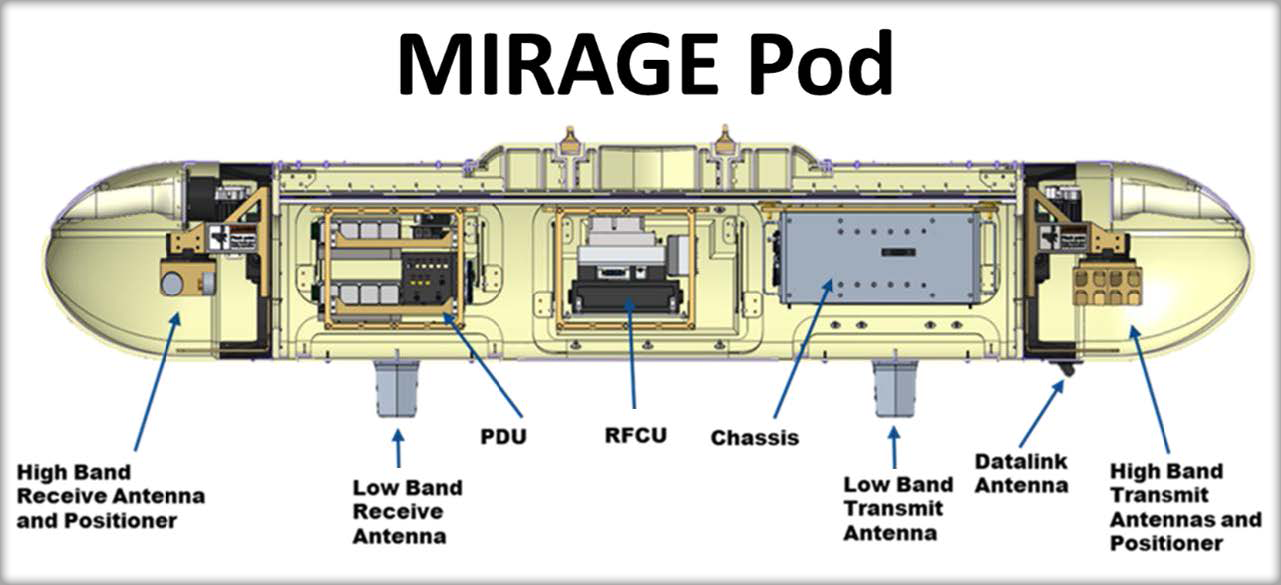APP ENABLED RAPIDLY REPROGRAMMABLE EW/EMS SYSTEMS
The Air Force Research Laboratory Strategic Development Planning and Experimentation office’s App Enabled Rapidly Reprogrammable EW/EMS Systems (AERRES) experiment is focused on enhancing electronic warfare (EW) capabilities to make them more flexible and adaptable against modern EW threats. The critical enablers are open hardware and software architectures, which provide common interfaces, and “design to” criteria for developers. Aided by open architectures, the U.S. Air Force (USAF) will expand industry participation and the solutions needed to dominate in the EW domain.
In the age of digital processing and software defined radios, EW threats are increasingly evolving and making it more challenging to defeat them. To more effectively operate in this modern threat environment, USAF EW systems require more processing power and new algorithms to help identify and defeat those threats. As new or different solutions are required, the USAF also must be able to quickly modify EW systems without adding significant times to acquisition, regression testing, or fielding.
Modeled after common smartphones and app stores, AERRES is assessing and maturing hardware/software standards, which provide initial backbone architectures for rapidly adaptable EW systems. Hardware aligned with these standards and implemented in USAF weapon systems, enables greater flexibility to insert or swap hardware as new, more effective solutions are found. Similarly, software apps designed to these standards, enable greater portability across many different aircraft platforms, and agility to update them as new code is generated.
The Multi-mission Integrated Rapid Accelerator Government-off-the-shelf Environment (MIRAGE) pods were developed to support AERRES flight testing and future EW test efforts.
Specifically designed around open architectures, the modular pods provide the ability to flight test EW hardware and software without costly aircraft integration efforts. Additionally, hardware and/or software can be quickly reconfigured between flights — or in the case of software, during flights. The pods also include a commercial datalink providing offboard control, as well as pod-to-pod communications.
In calendar year 2023, the AERRES campaign completed many key milestones and vital objectives. Over a series of 13 flight test missions using the MIRAGE Pods, AERRES demonstrated functional capabilities of multiple vendor Big Iron Software Frameworks and a variety of EW apps employed within those frameworks. Additionally, the team demonstrated inflight mission data file reprogramming, as well app resets and uploading of new apps processed through the 350th Spectrum Warfare Wing TAC APP Store.
As part of the AERRES Capstone event, a Time Difference of Arrival app ported into the Big Iron Software Framework was demonstrated using two airborne MIRAGE pods and one ground node, cooperatively passing emitter data to resolve a simulated threat location. The success of these operational experiments was built upon many Big Iron Standard discoveries and implementing updates to improve the viability of the standard.
The AERRES Campaign will conclude in fiscal year 2024 and this year’s objectives include the demonstration of another system aligned with Big Iron and Sensors Open System Architecture (SOSA), evaluation of a machine learning algorithm within a Big Iron Software Framework, and demonstration of a Blackbox (proprietary) firmware load running simultaneously within the open architecture.
Additional MIRAGE pod upgrades also are being made for future test efforts. Post fiscal year 2024, the MIRAGE pods will transition to other EW experimentation efforts to further advance Open Architectures End State and USAF warfighting capabilities.

The Multi-mission Integrated Rapid Accelerator Government off-the-shelf Environment (MIRAGE) pods provide the ability to flight test EW hardware and software without costly aircraft integration efforts. Additionally, hardware and/or software can be quickly reconfigured between flights, or in the case of software, during flights.
